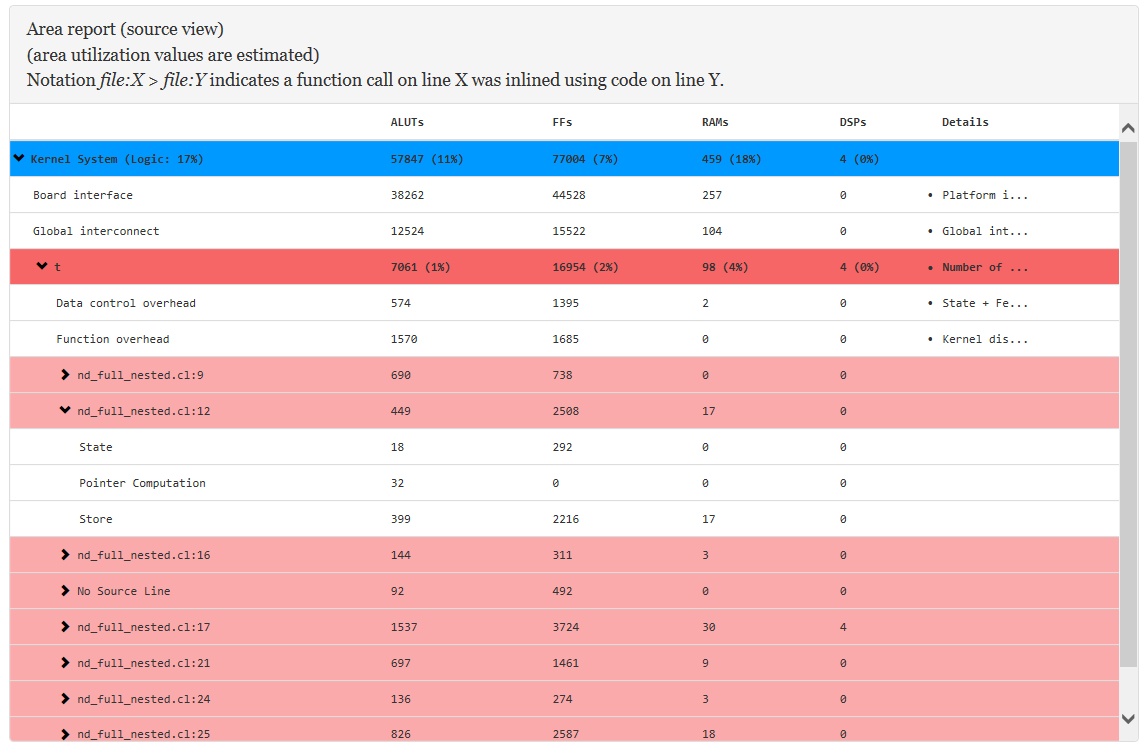Intel® FPGA SDK for OpenCL™ Standard Edition: Best Practices Guide
2.4.1. Area Analysis by Source
OpenCL kernel example that includes four loops:
1 // ND-Range kernel with unrolled loops
2 __attribute ((reqd_work_group_size(1024,1,1)))
3 kernel void t (global int * out, int N) {
4 int i = get_global_id(0);
5 int j = 1;
6 for (int k = 0; k < 4; k++) {
7 #pragma unroll
8 for (int n = 0; n < 4; n++) {
9 j += out[k+n];
10 }
11 }
12 out[i] = j;
13
14 int m = 0;
15 #pragma unroll 1
16 for (int k = 0; k < N; k++) {
17 m += out[k/3];
18 }
19 #pragma unroll
20 for (int k = 0; k < 6; k++) {
21 m += out[k];
22 }
23 #pragma unroll 2
24 for (int k = 0; k < 6; k++) {
25 m += out[k];
26 }
27 out[2] = m;
28 }The area report below lists the area usage for the kernel system, board interface, and global interconnects. These elements are system-level IP and are dependent on the Custom or Reference Platform that your design targets. The kernel t is within the hierarchy of the kernel system and is where the source code begins. The report specifies all the variables declared within the source code under kernel t and sorts the remaining area information by line number.

In this example, for the code line for the code line j += out[k+n] (line 9), the calculates the estimated area usage based on the area required to perform the addition and to load data from global memory. For the code line out[i] = j (line 12), the offline compiler calculates the estimated area usage based on the area required to compute the pointer value and then store it back to global memory.